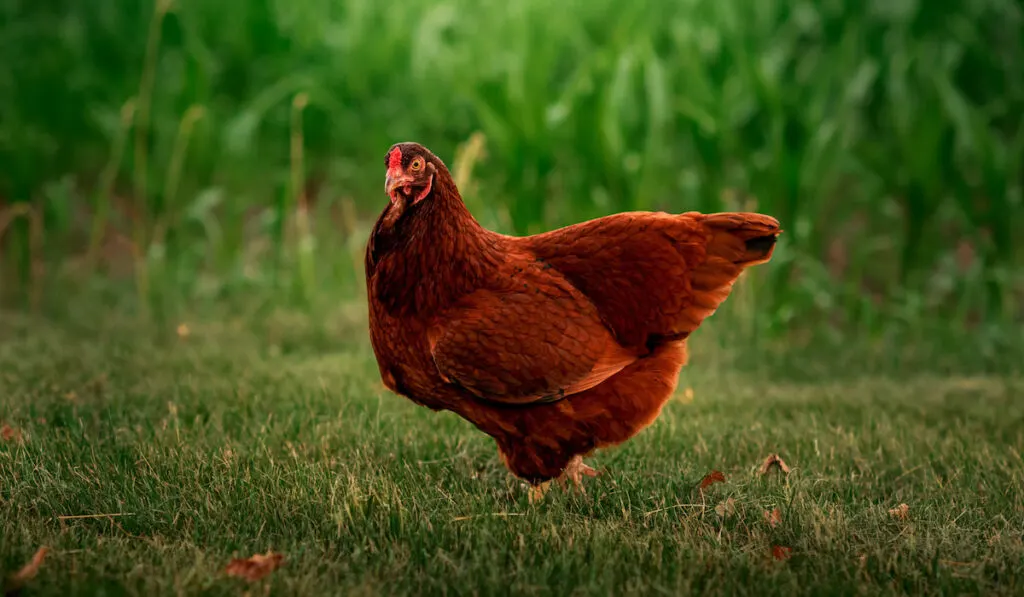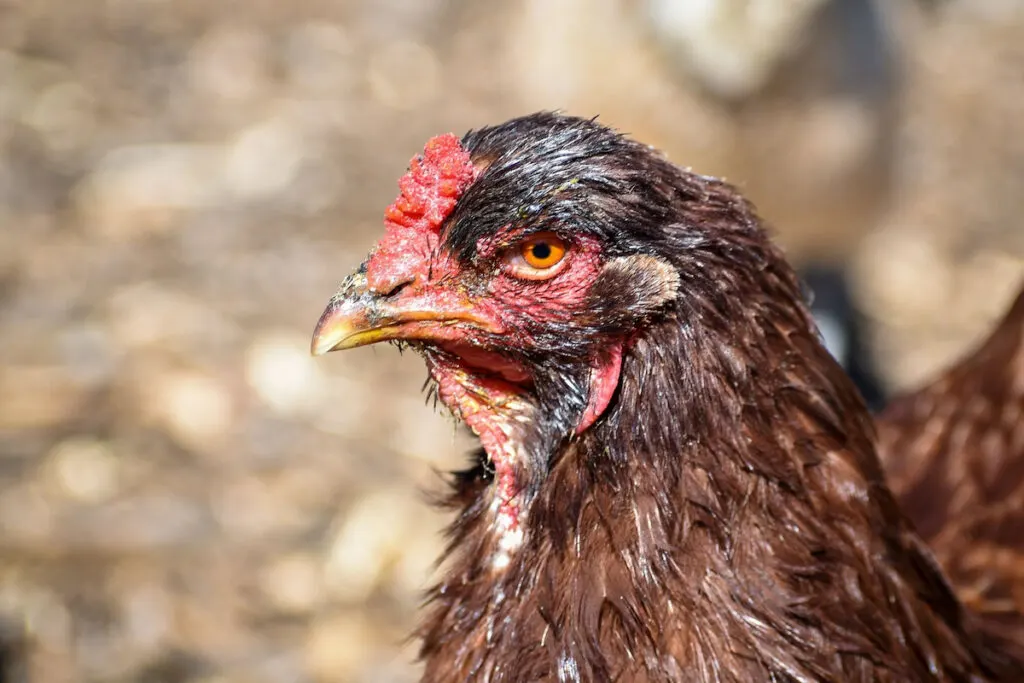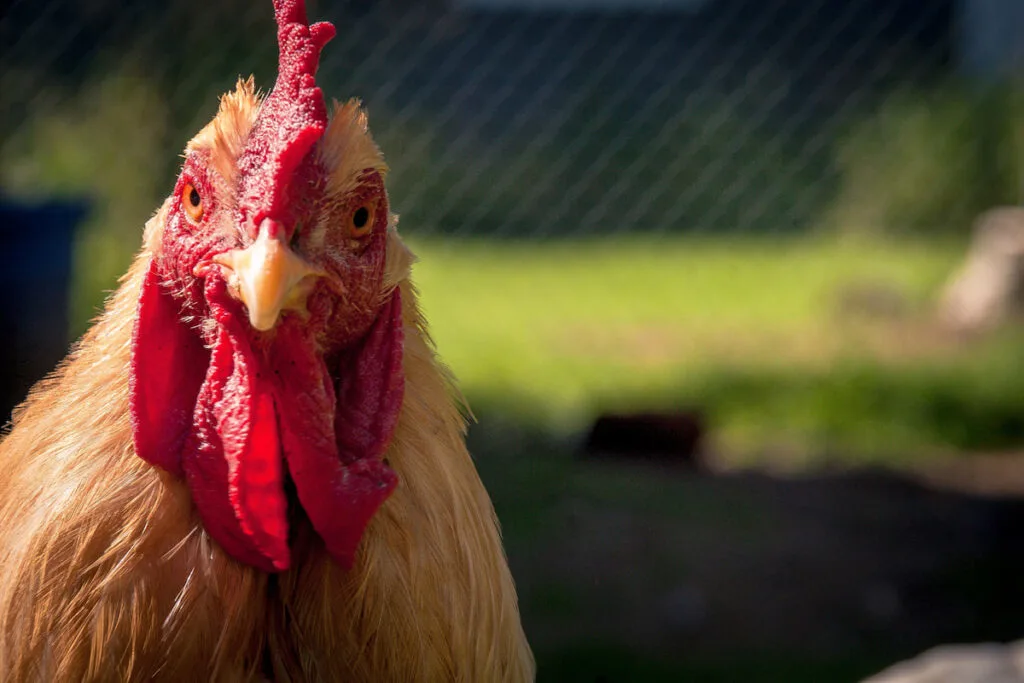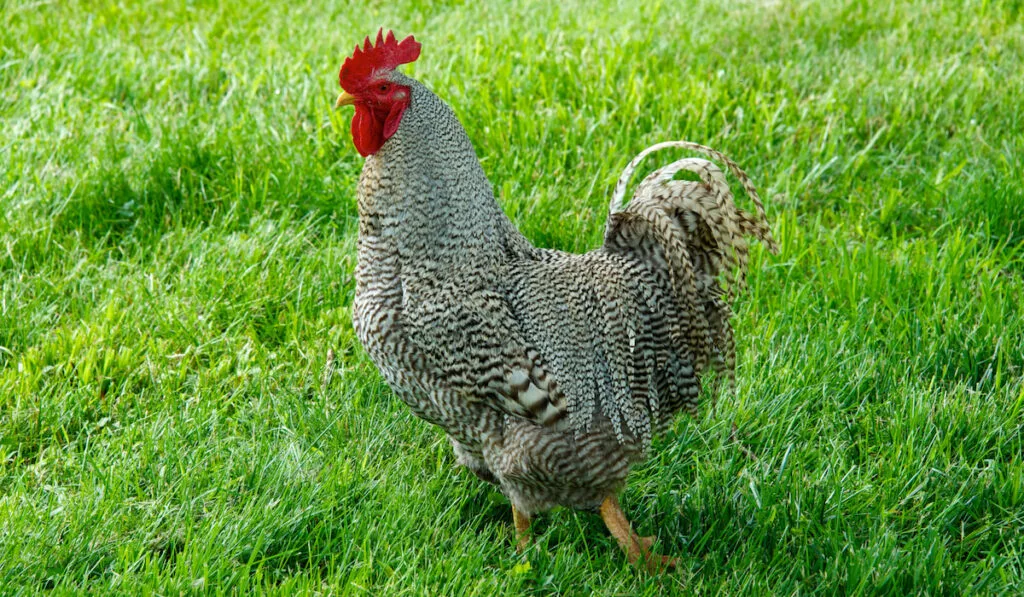Do you like hardy and beautiful chickens? The Buckeye chicken is one purely American breed that would make a very fine addition to your chicken coop.
Buckeyes are beautiful, dual-purposed, and very easy to care for. Awesome breed, right? Continue reading this article to learn all you need to know about this special Buckeye chicken breed.
Table of Contents
History and Origin
The beautiful Buckeye chicken was created in Ohio late in the nineteenth century by a woman named Nettie Metcalf. This breed is truly special, as it is the only known (or popular) American chicken breed made by a woman.
These chickens have the color of the Ohio Buckeye plant’s seeds (Aesculus glabra). Remember that the State of Ohio is called the ‘Buckeye State’.
The parents of this beautiful breed are Buff Cochins and Barred Plymouth Rocks. However, some black-breasted red games added other desirable features to the birds.
Buckeyes got their approval to join the American Poultry Association’s Standard of Perfection in 1904.

Characteristics
This beautiful breed is truly a special one, as it is the only purely American bread to have a pea comb. A pea comb looks rough or bumpy and has three ridges.
Buckeyes look very similar to the Rhode Island Red chicken. However, you can easily identify Buckeyes by the slate color on their back feathers (close to the body).
Buckeye chickens also have a more compact body. Their backs are short and broad.
Weight
The weight of Buckeyes varies according to sex. The males weigh about 9 lbs. or 4 kg. However, the hens weigh around 6.5 lbs. or 3 kg.
Color
The first thing you’d notice in these chickens is their primary color, which is mahogany red. They also have black tails. However, the males sometimes have some dark feathers around their bodies.
Buckeye chickens have yellow skin. Also, their eggs have brown shells.
Eggs
Your beautiful chickens will give you between 150 and 200 eggs yearly. Cool, right? Something extra is that the pullets will start producing eggs when they are six months old.
This means that when you raise Buckeyes, you get a lot of eggs quickly.
Lifespan
If you take good care of your birds and leave them to grow old, they will live for ten or more years. Just ensure that they get regular health checkups, quality food, and a safe shelter.
Sexing
It can be easy to know the sex of most chicken breeds by just looking at them, especially when they are mature. However, Buckeyes also have some distinguishable features to help you identify their sexes.
Male buckeyes have a cream or white spot on their upper wings. As for the females, they have a dorsal stripe or a dark spot around their head area.
If you want to identify the sex of a buckeye chick, venting is a reliable technique. You can vent the chicks by gently squeezing feces off them and checking for small bumps. Males have little bumps while females do not.

Behavior and Temperament
These special chickens are very active foragers. However, they are calm birds and will not disturb you with their noise.
They are docile and also very friendly. When they trust that you won’t harm them, you can easily go near them, pet them, or even carry them.
While female buckeyes make good mothers and incubate their eggs, they are still relatively active and will lay more eggs sooner than you expect.
Uses
Buckeyes are dual-purpose chickens. This means that they are very effective at meat and egg production. Due to their calm temperament, these chickens also make good mothers.
Meat Production
The chickens can grow up to 6.5-9 lb (3-4 kg) and their meat is super sweet and nutrient-rich, so they are popular on farms across the country. Though they do not grow to become the largest chickens, buckeyes are fast-growing, and you will get meat faster when you raise them.
Egg Production
Eggs with brown shells are popular across America and Europe, so a lot of farmers raise Buckeye chickens for their eggs. These chickens can produce as many as 200 eggs annually, so you’ll get a steady stream of eggs, especially in the summer months.
If you want your Buckeyes to lay eggs in winter, adjust the temperature and other environmental conditions in the coop so that it becomes very suitable for the birds to produce eggs.
However, it is a very good practice to leave your hens during the winter so that they can rest from egg production and gain extra weight.
Brooding
Though these chickens are not the best when it comes to parenting, they can help you hatch the eggs. If you have chickens (or other birds) that poorly incubate their eggs, you can employ your Buckeye hens to incubate the eggs for you.
Also, Buckeye hens are protective mothers, so they will keep the chicks safe from harm.

Hatching and Raising
Caring for Buckeye chickens is easy so long as you can provide for their needs. To care for birds (after vaccinating them), focus on housing and feeding them. Also, use the best methods available to you to incubate the eggs.
Incubation, Hatching, and Brooding
When your hens lay eggs, it is totally up to you to decide how to incubate the eggs. Buckeye hens are good mothers and most of the eggs will hatch under the care of hens.
However, you can increase the hatching rate of your eggs by using an incubator. Remember to turn the eggs an odd number of times daily and candle them weekly.
When the chicks hatch, you can leave them with their mum or care for them in a brooder box. If you are raising your Buckeyes as free-range birds, leave the chicks with their mum. Just make sure that they have sufficient food.
Housing
Remember that these chickens have a pea comb. They also have a stocky (or compacted) body build. These qualities make them very cold hardy.
However, you have to raise your birds in ideal growing conditions so that they do not fall ill quickly. Ensure that their coop is both ventilated and insulated.
A well-ventilated coop will permit proper airflow so that your birds do not live in a stuffy place. A well-insulated coop prevents your birds from getting too cold, especially in the winter months.
You can insulate your Buckeye coop by using bedding on the floor, installing heat lamps, and building the coop with less heat-conducting materials.
Remember that while these chickens can grow well in confinement, they are happier outside. Therefore, ensure that the yard is suitable for them as well by keeping it clean and predator-free.
Feeding
Your chickens need quality feed with 18% to 23% crude protein depending on their age. Even though you let them go outside, ensure that they still have access to their quality feed.
Buckeyes are happier and tend to produce more eggs and meat when they find whatever they can eat on the grass or vegetation nearby.
These chickens are good mouse hunters, so they will also keep your yard free from a lot of pests.
Keep the water clean. As a general rule, if you can’t drink the water you are giving your birds, it is not good for your birds either. Remember to regularly wash the water trough of your Buckeyes.

Free-Range Care
These chickens are happier when you let them go outside. They can also grow faster than birds in a coop, as they’ll have more food outside.
However, do not abandon them outside. Always think of their needs. For example, ensure that they do not run out of food and clean water. Also, only let them go outside when the yard is secure.
Make a few roosting areas around your yard, especially in shady areas such as under trees so that your Buckeyes can easily run from the rain or rest when it’s too hot outside.
Also, if you have Buckeye chicks, keep them safe from flying predators by always keeping an eye on them.
Final Thoughts
You’d agree that the Buckeyes would make a fine addition to your coop, right? These chickens are easy to care for, so consider raising them, especially if you are new to bird-raising. So long as you give them all their needs, they will grow just fine.
